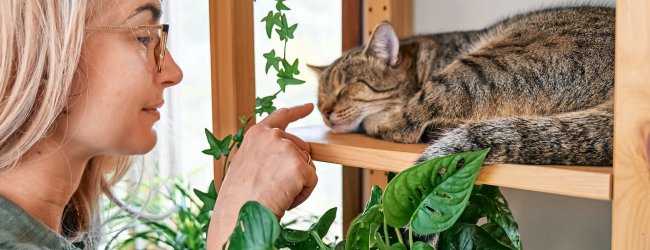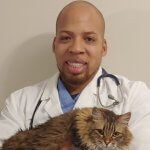 Approved by Dr. Dwight Alleyne, DVM
Approved by Dr. Dwight Alleyne, DVM Cat Not Eating As Much? These Might Be The Reasons Why
If your cat is not eating, is it harmless or dangerous? Discover all the reasons why a cat might not be eating - from the harmless to the harmful - and what you can do to help them gain their appetite back.
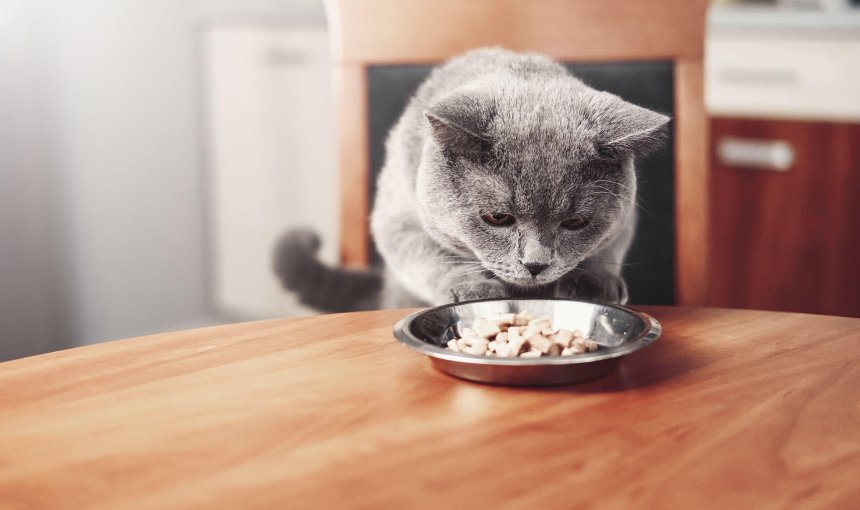
As a loving cat parent, it’s pretty alarming to come across your cat not eating – or just not eating as much, or maybe even neither eating nor drinking! But while it can be due to harmless reasons in some cases, others might signal it’s a more serious health issue at hand.
Because, for example, it could be just that your cat’s been getting some extra treats and nibbles at your neighbor’s. (Or neighbors.) Else, they might be putting their hunting skills to use among the local squirrel or mouse population.
Unfortunately, some of the other reasons for a cat not eating might include illness – or even serious cases, like poisoning.
So let’s dive right into the reasons for a cat not eating as much – and what you can do to address it. (Including tracking where they’re getting fed, hunting, or wandering off to.)
- Why is my cat not eating? 3 less concerning reasons
- 10 more concerning reasons your cat won’t eat
- How to preempt a sickness in your cat – and take action early
- Cat not eating much but acting normal?
- Hepatic lipidosis (fatty liver) in cats
- 3 steps you can take if your cat is no longer eating
- Wrapping up: Why is my cat not eating? And what can I do about it?
- Dr. Dwight Alleyne, DVM
Why is my cat not eating? 3 less concerning reasons
Now if you’ve got a cat not eating as much, it isn’t always a cause for concern. Not every case of loss of appetite is due to illness. For example, you might notice them less hungry in general if they’re recovering from a surgery or have just been recently vaccinated.
So here are some of the less concerning reasons your cat isn’t eating.
They’ve already gotten fed…somewhere
Including at your neighbor’s (or neighbors), someone in your family, or if they’re exercising their hunting skills.
In fact, outdoor cats tend to have wide territories they patrol and defend. Most of which include “prey” animals, like rodents, squirrels, and even small birds your cat might be hunting when out wandering.
It’s also possible they’ve been sneaking some extra treats and snacks from your neighbors – or even one of your family or housemates. (Which, sadly, increases the risk they might experience more serious weight-related health issues over the long run.)
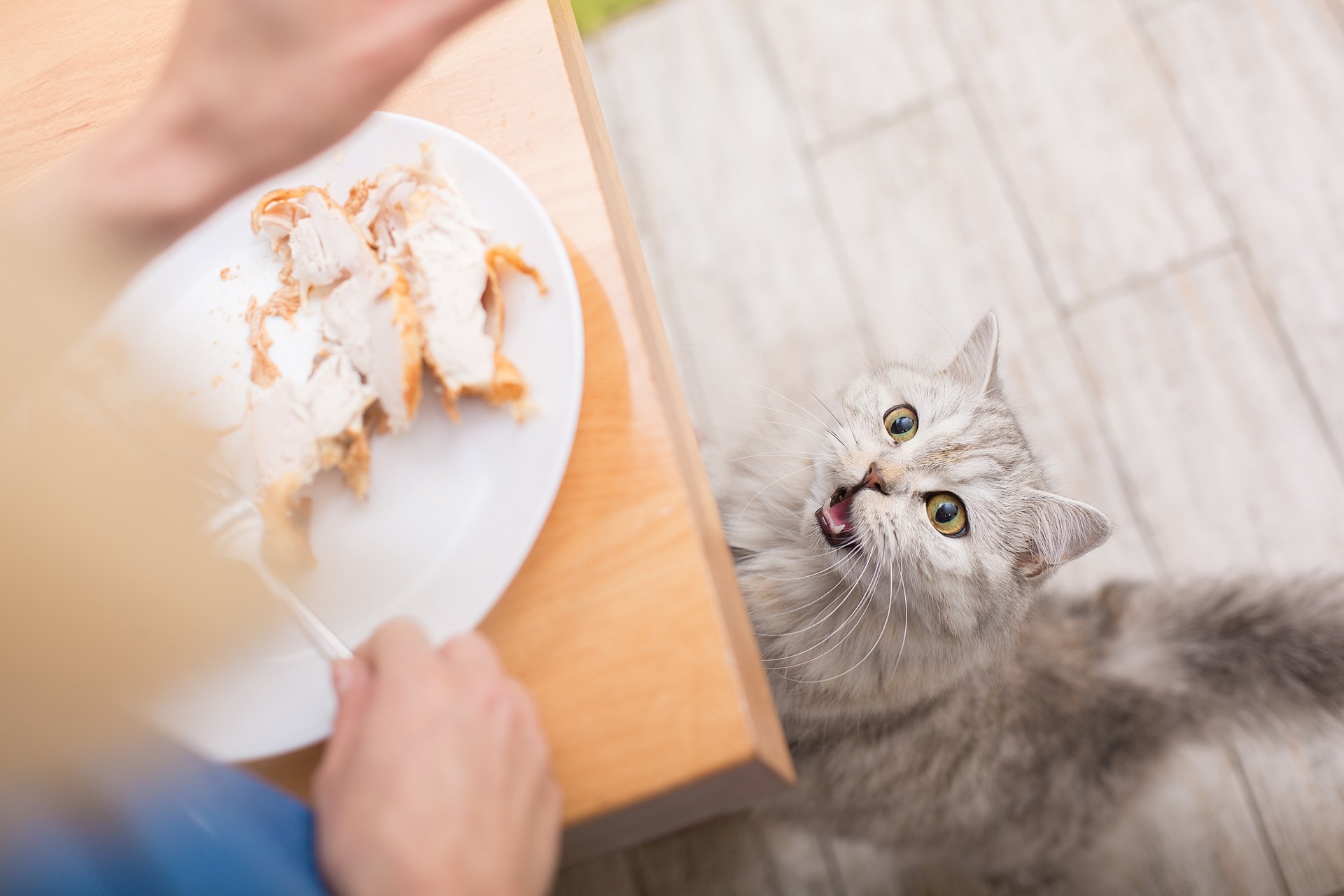
⚠️ Now this may be one of the more harmless reasons behind a cat not eating – but it’s also one that opens yours up to a whole bunch of dangers.
Because a cat wandering around outdoors is always at risk of:
- Crossing the street at the wrong time
- Running into an unfriendly pet or predator
- Being mistaken for a stray and ending up a shelter
- Or even being kidnapped by a pet thief
Not to mention eating or being fed something potentially toxic entirely by accident!
Read more: What Can Cats Not Eat? (And Why Not?)
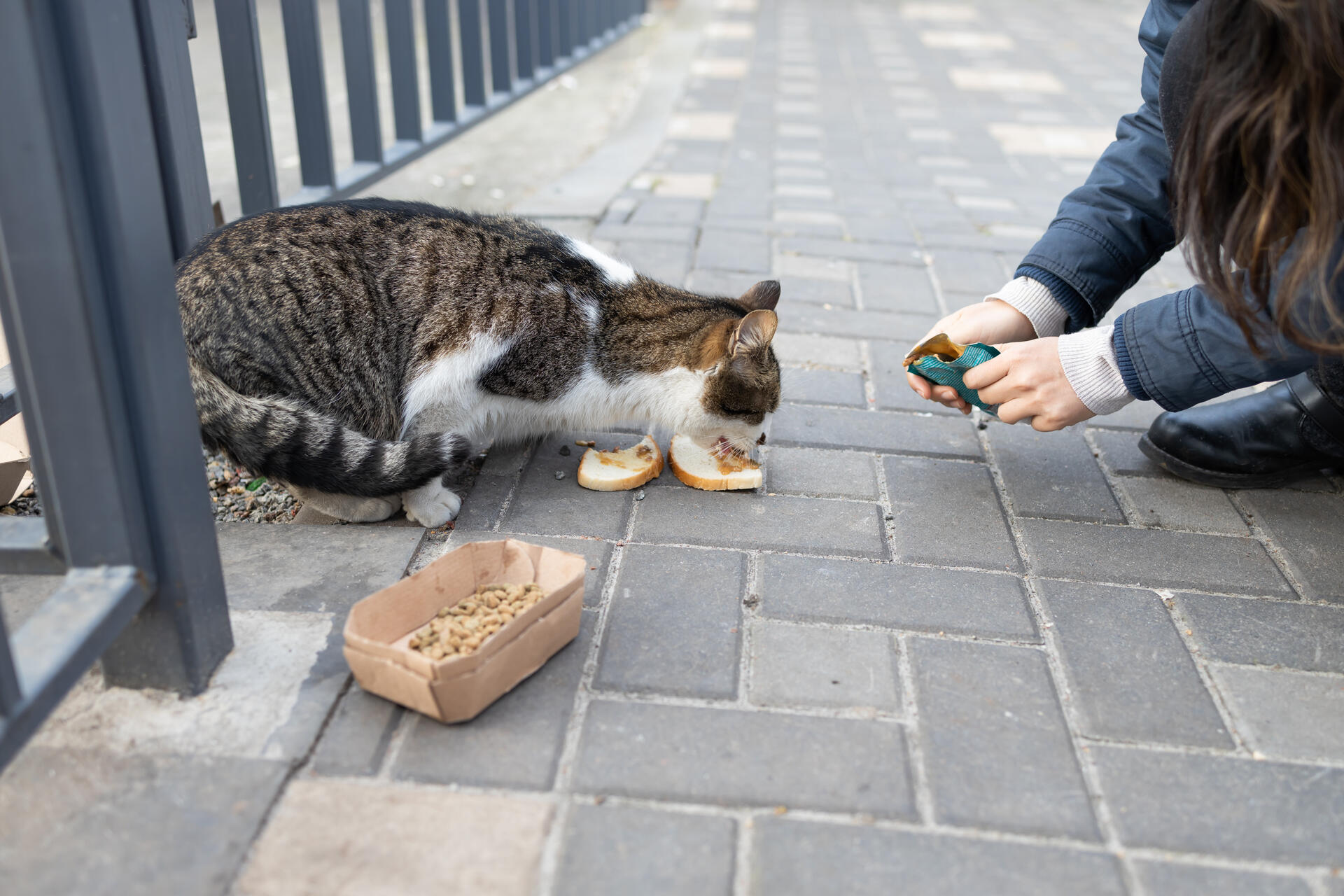
💡Which is why cat parents around the world are investing in GPS trackers to monitor their buddies’ adventures – in real-time and over an unlimited range.
With a Tractive device, you can even map out your cat’s territory – so you know exactly where they’re most likely to be off wandering.
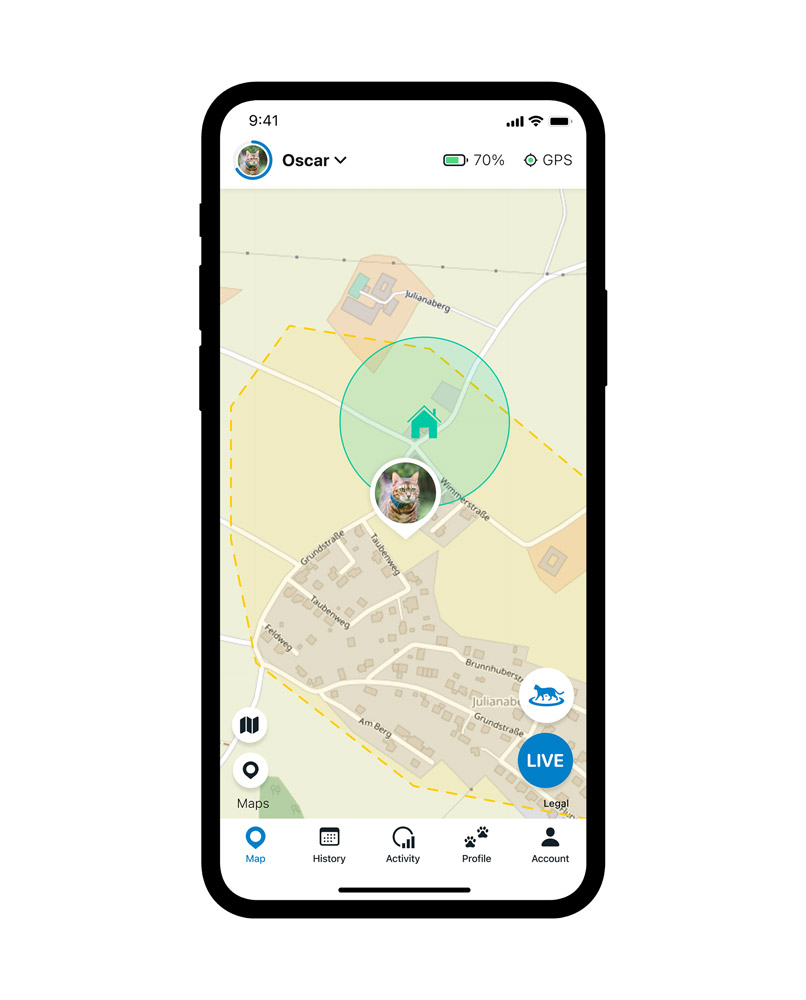
Meaning you can figure out if these overlap with your neighbors’ houses, the local patch of woodland, or even the neighboring trash disposal.
Which, in the long run, helps you prevent your cat from wandering elsewhere to search for food – and eating something off-limits.
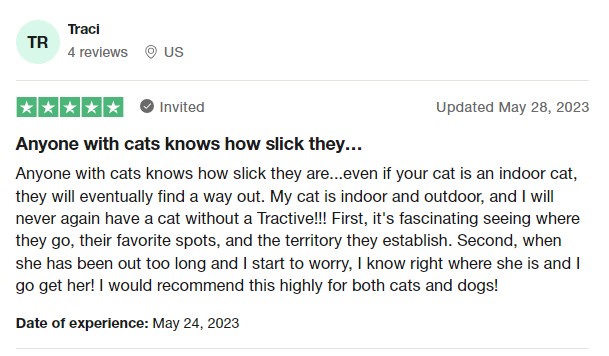
Something’s stressing out your cat
Another broader reason for your cat not eating as much is stress. And, unfortunately, something as small as a change in routine can be “stressful” for your cat. (Which, arguably, is kinda the same for us, if you think about it.)
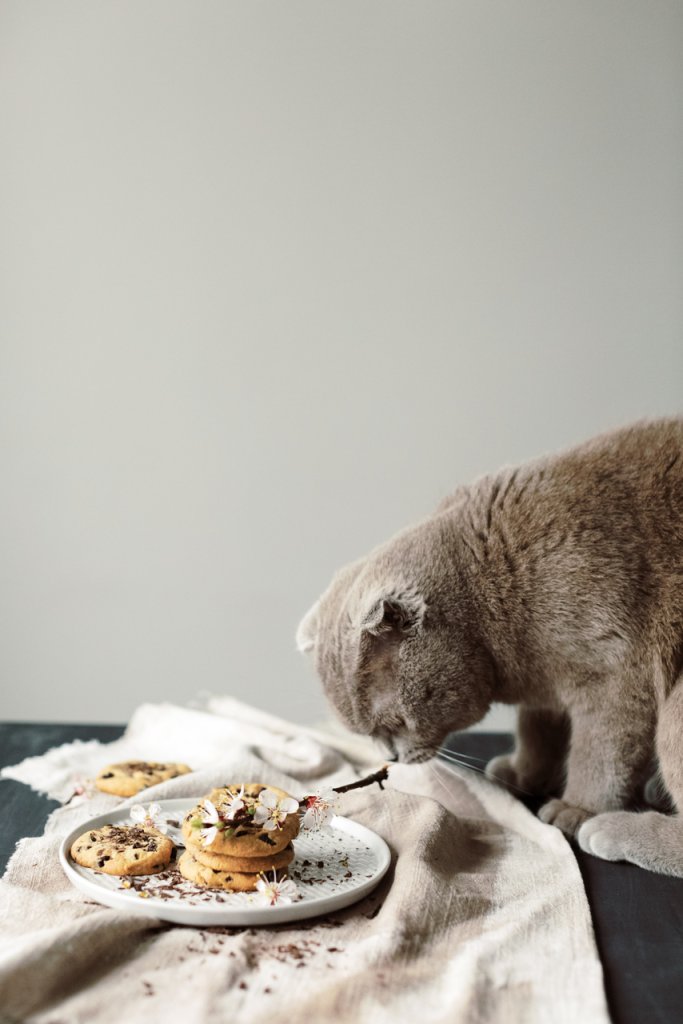
So these “stressful” situations could include:
- The loss of a friend – whether that’s an animal or human friend. (And not necessarily to anything serious, it could even be if one of your kids moves out of state for college)
- The chaos of moving houses or traveling in general
- Switching to new food or a new food bowl (or not having their own bowl). In these cases, you might observe your cat sniffing the bowl but not eating.
- Not having enough privacy while feeding (Meaning give them a little space to eat by themselves.)
- The weather being too hot
- A new pet (or person) joining your household
In these cases, your cat’s drop in appetite might be temporary. Just give them some time to adapt – plus spend enough time with them to help ease them into their new surroundings.
Your cat may be in heat
Uh-oh, you may be graduating to cat grandparent! Turns out, a loss in appetite is one of the early signs your cat is in heat and looking for the purr-fect partner. Thankfully, this is 100% normal and shouldn’t last long.1
Read more: Cat In Heat? What You Need To Know.
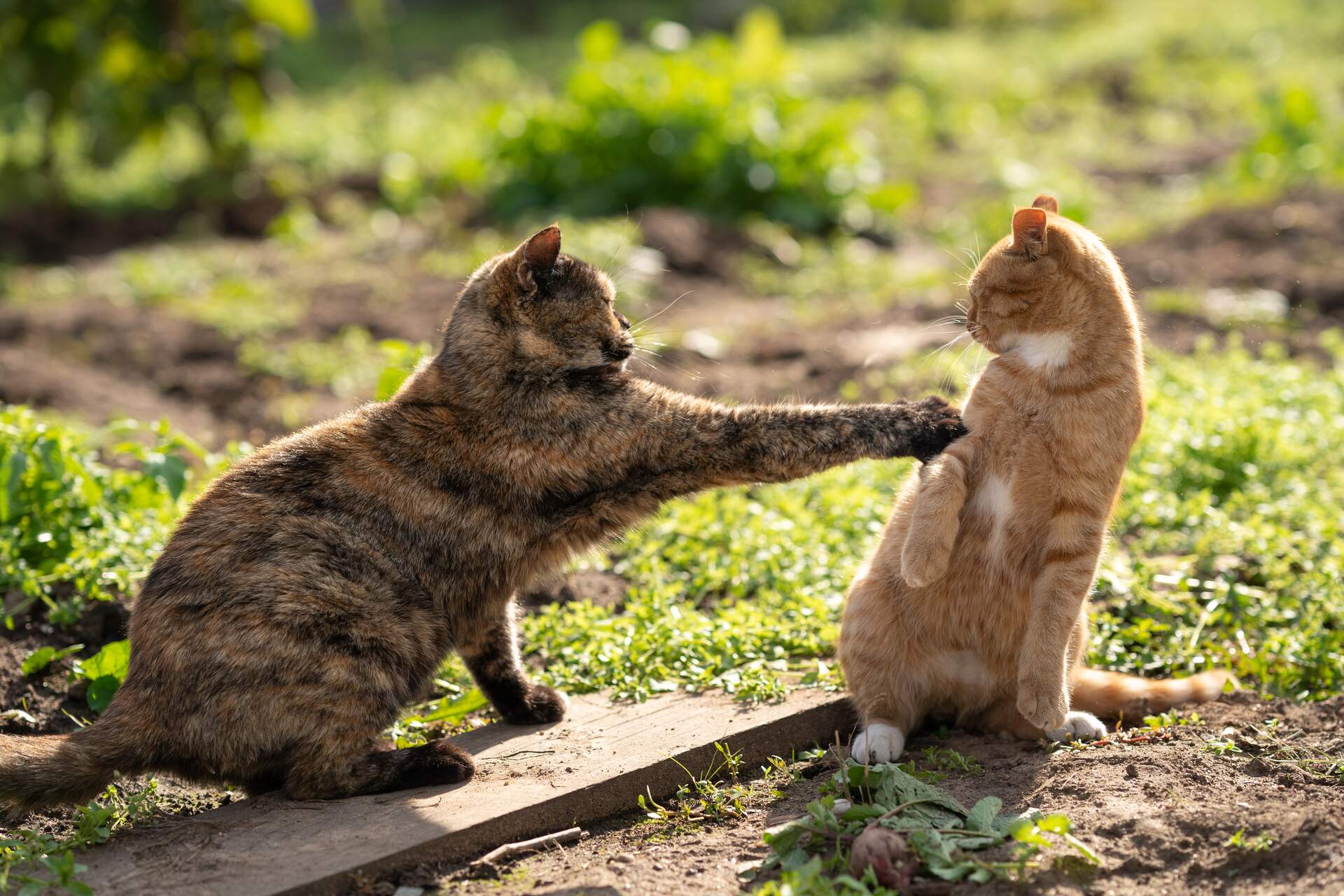
⚠️ However, if your cat isn’t eating at all, make sure to keep an eye out for any other signs of illness. (Including lethargy, or a drop in activity.) Make sure to drop by your vet in case you notice this loss of appetite persisting more than 2 weeks.
Because, unfortunately, there are a number of serious and potentially life-threatening reasons why your cat may not be eating as well.
10 more concerning reasons your cat won’t eat
In some cases, a cat not eating is a symptom of a more serious health problem. Including:
- Poisoning
- Inflammation of the organs
- Dental problems
- Infections (including viral and parasitic infections – especially if your cat hasn’t been vaccinated)
- Gastrointestinal disease
- Hyperthyroidism
- Intestinal obstruction or constipation
- Urinary tract obstruction
- Liver disease
Other symptoms to watch out for – besides your cat not eating
Besides refusing to eat, watch out for these other signs of illness – and get your cat to a vet for a checkup immediately.
| If your cat isn’t eating and… | It could be a sign of… |
| Vomiting | Food allergy, intestinal obstruction, kidney failure, poisoning |
| Sleeping a lot | Fever, infection ⚠️ Keep in mind that a cat’s normal body temperature should be between 100.5° and 102.5°F (38° and 39°C.) A temperature above 39.5°C most likely indicates an infection. |
| Having diarrhea | Poisoning, food allergy, inflammation of their intestines or pancreas, parasites, organ disease |
| Drinking a lot of water | Diabetes, renal insufficiency, urinary infection, liver disease |
| Lethargic | Fatty liver syndrome (especially if accompanied with weight loss) |
How to preempt a sickness in your cat – and take action early
One of the first signs your cat is sick is if they seem less active than before – or just seems more reluctant around playtime. In fact, it’s why vets recommend keeping track of your pet’s regular activity. (Because a drop could signal a deeper, less obvious and more serious problem.)

– VCA Animal Hospitals“Keep track of your (pet’s) energy levels, especially how long they are able to walk.
If you notice significant declines, it could be a sign of pain, heart disease, or other illness.”
Now you could jot down your cat’s symptoms in a journal to keep track over time. Or you could go for the actionable data you get from an Activity Tracker built for pets (and pet parents).
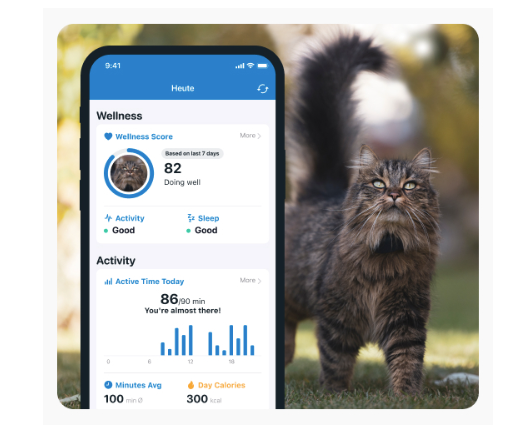
Because besides GPS tracking, your trusty Tractive device also helps you keep track of your cat’s daily activity – and sends you Health Alerts if their active minutes drop below a certain point. (Meaning they could be struggling with sickness, pain, or infection.)
With its built-in motion detector, your tracker logs in your cat’s activity throughout the day. And helps you figure out:
- What’s a normal level of activity for your cat
- How active your cat is compared to other, similar cats around the world
- If there’s an abnormal spike or drop in your cat’s activity level
Meaning you can preempt a sickness before it worsens – and get your cat to a vet on time. (Plus avoid a hefty bill from a condition you could’ve avoided otherwise.)
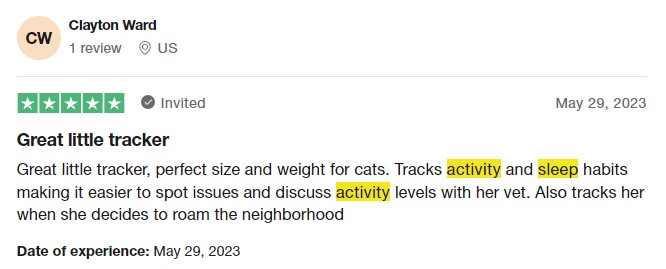
Cat not eating much but acting normal?
Other reasons you may have a cat not eating but seeming normal otherwise include aging and/or neutering. Both these situations include a drop in your cat’s overall energy – so they just need less food overall.
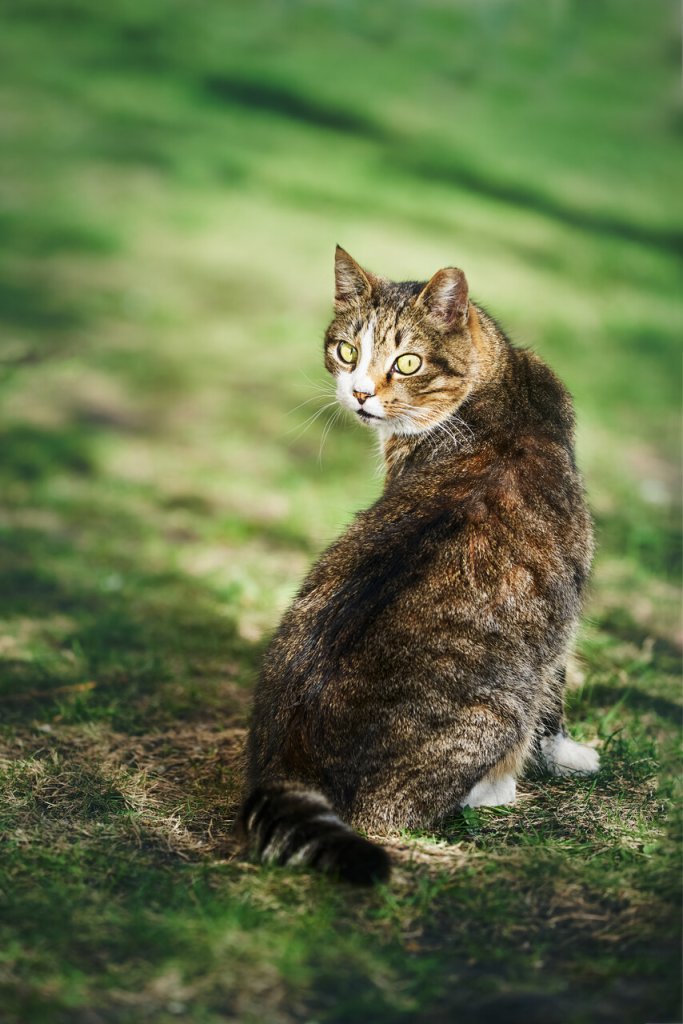
- Senior cats, for example, need around 20% less energy (or calories from the food they eat.)
- Neutering, similarly, can reduce your cat’s overall energy needs by 20-30%. (It’s why some cat parents wonder why their neutered cats have gained weight after the snip – if you keep feeding them the same amount of food as before, they’ll naturally gain weight as a result.)
So if you’re observing your cat not eating after getting neutered, it may not necessarily be cause for concern. They’re just less likely to get hungry as before.
However, knowing how notorious cats are for hiding signs of illness, your cat should resume eating normally as soon as possible. If yours doesn’t eat for more than 24 hours, drop by your vet for a checkup.
Hepatic lipidosis (fatty liver) in cats
If your cat doesn’t eat for a while – like a few days in a row – they may be at risk of developing hepatic lipidosis, or fatty liver disease. This is a lipid metabolism disorder in cats that can lead to acute disease within a few days and could lead to organ failure or even death if left untreated.
“Lipidosis” means an abnormal accumulation of fat. One of the main causes for this condition is when cats don’t eat for a while – making their bodies store fat in their livers instead.2
Over time, this might show up as:
- Yellowing of the skin and eyes
- Lethargy, or a drop in your cat’s overall activity level
- Vomiting
- Seeming weaker than usual – as well as other behavioral changes
Overweight and female cats are most at risk for developing hepatic lipidosis, or fatty liver. Make sure to get in touch with your vet immediately if you notice any of these signs.
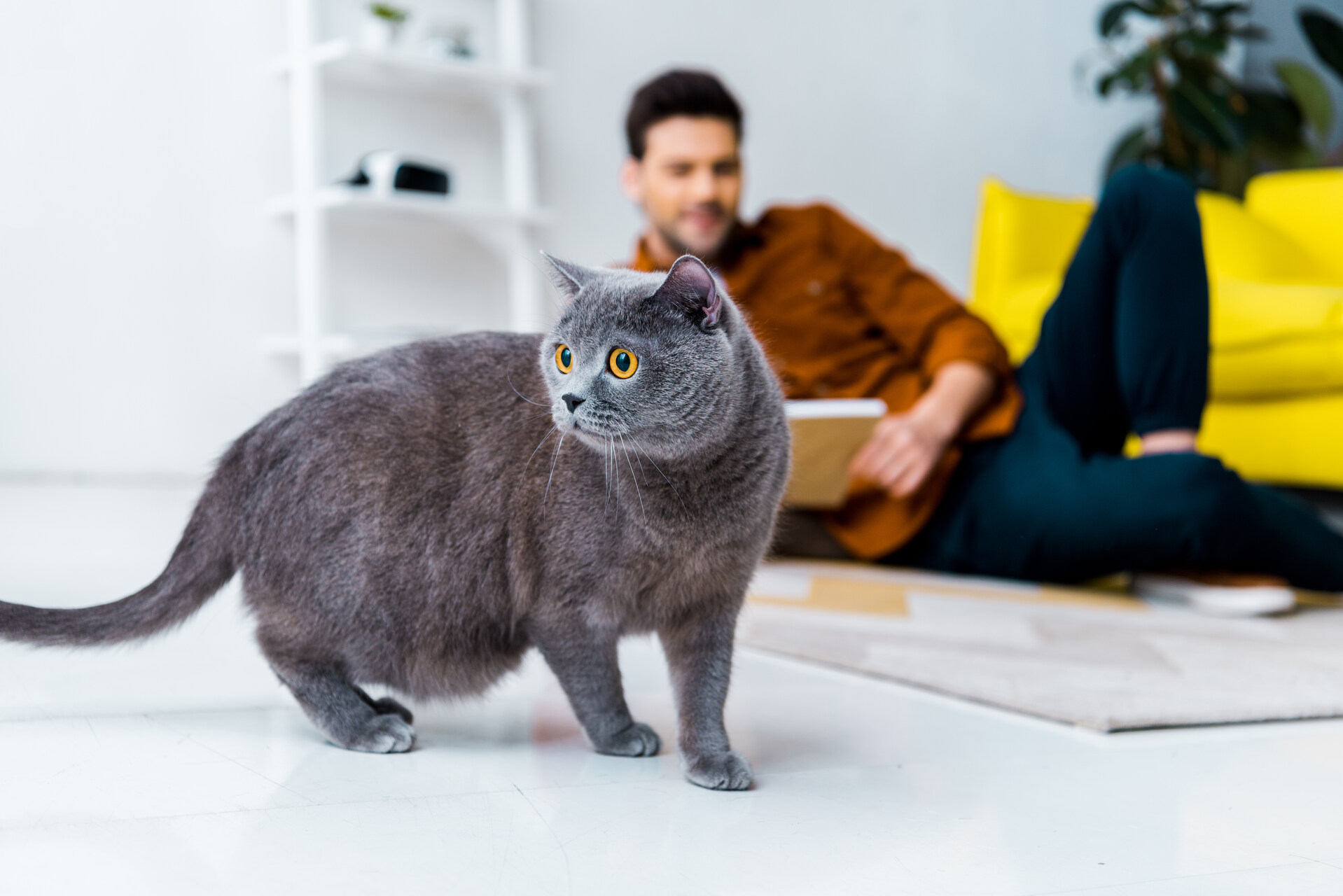
💡But if you’ve invested in a Tractive device, you can catch on to your cat’s lethargy before it worsens.
Else, even if you miss a day of tracking, you’ll get a Health Alert if your cat’s activity drops below what’s “normal” for them.
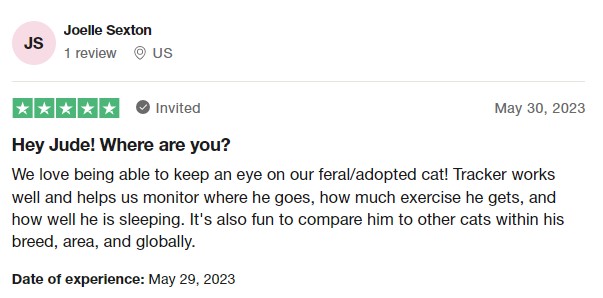
Besides food, it’s important your cat drinks a healthy amount of water as well.
- In general, your cat should be drinking between 1-2 oz per pound (45-60 ml per kg) of body weight per day.
- A normal-weight cat weighing 9lbs/4 kg needs around 6 oz/200 ml of liquid per day to prevent dehydration.
Read more:
3 steps you can take if your cat is no longer eating
If your cat hasn’t eaten for 12-24 hours, this can be life-threatening for them. So make sure to keep an eye out for any symptoms of lethargy or malaise – and get them to a vet right away.
Your vet might take a blood test and stool samples to figure out what’s causing your cat’s loss of appetite. In some cases, they might even need to examine your cat through an X-ray or ultrasound.
But here’s what you can do otherwise:
Switch up your cat’s diet – gradually
Gradually introduce lukewarm, easily digestible food to your cat’s diet – no big changes. (Else you’ll just stress them out.)
- Boiled chicken or a mix of lean poultry, meat, and rice in small portions work best.
- Else, you could try heating or mixing the food in fish oil, broth, or cooked eggs to encourage your cat to eat3
- If your cat has gotten used to eating “human foods”, mix it with some cat food to help transition away from it.
Read more: What Human Foods Can Cats Eat? (And How Much?)
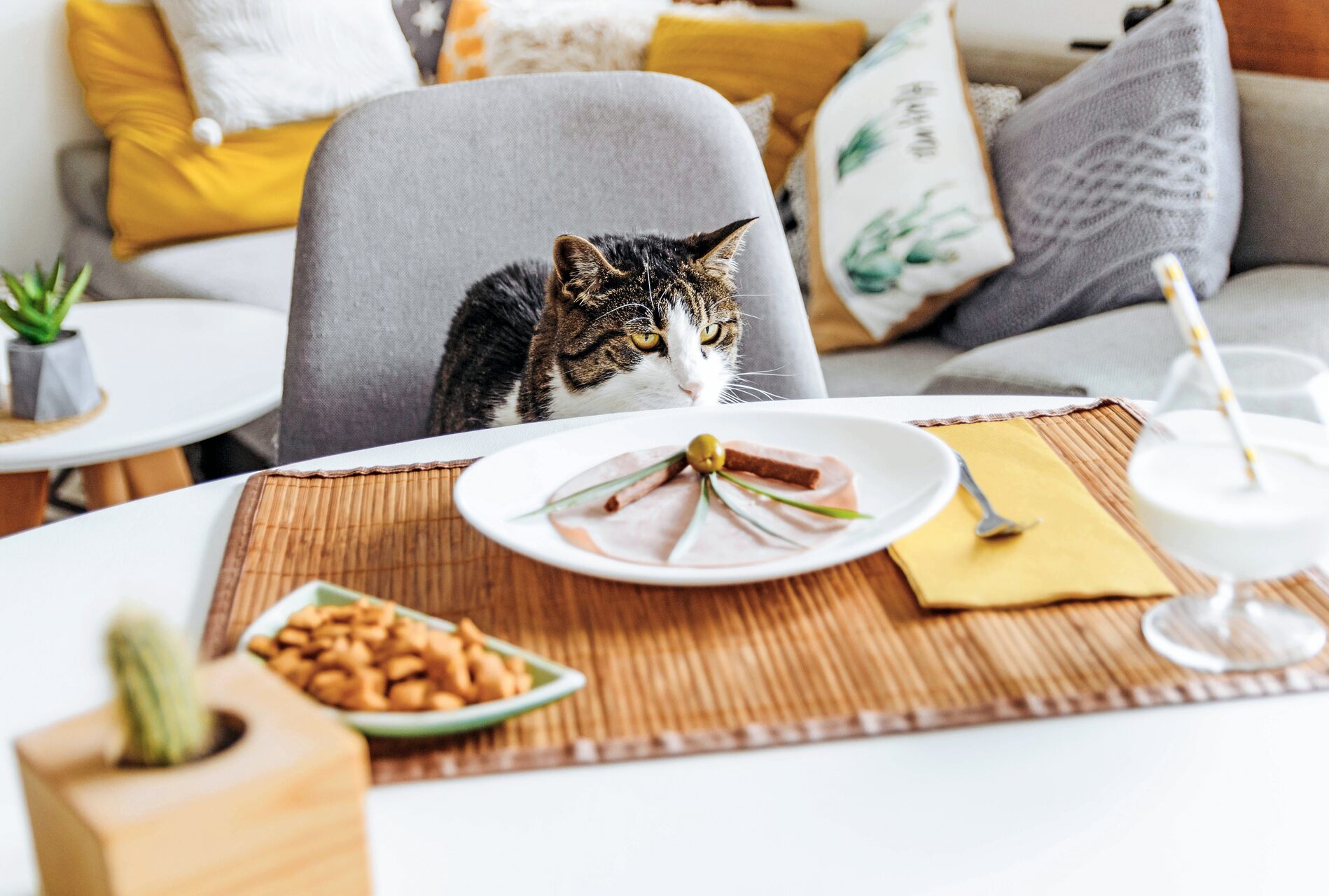
Served warm, simple foods like these are easier to smell and digest and also taste better to cats. They’re also easier on the stomach than cold foods.
You could also consider offering your cat smaller meals throughout the day. (Especially to prevent them from overeating as soon as their hunger returns.)
⚠️ Always check with your vet whether you should force feed your cat. (With a syringe or similar.) This could be a potentially stressful experience for your cat, which may not help them recover as best as they could otherwise. Your vet could also prescribe you a medically-approved appetite stimulant instead.4
Keep track of your cat’s symptoms – including their activity & sleep
If your cat’s hunger doesn’t return, make sure to keep an eye out for their symptoms. (Especially fevers, vomiting, or other signs of gastrointestinal trouble.) Get in touch with your vet immediately if their condition worsens or persists over a few days.
But given how your cat isn’t likely to come complaining to you when they’re feeling sick, it’s easy to miss out on the signs they’re not doing as well as they should.
💡Which is where regular activity tracking can help you pick up on whether they’re getting perkier as their condition improves – or if their slump is continuing. (Like if they’re sleeping more or less than usual as they recover.)
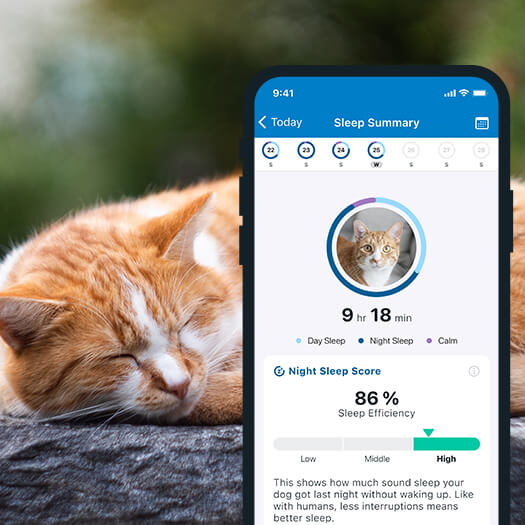
And with this data at hand, you’re also more likely to have a more productive conversation with your vet. (Rather than just relying on your memory.)
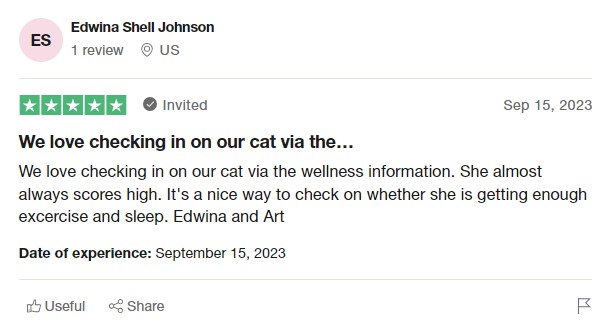
Keep your friends and family informed
If your cat’s gotten in the habit of getting fed elsewhere, it’s a good idea to keep everyone informed and set some hard boundaries.
- First, get informed on what foods are off-limits to cats. These include ingredients that are harmless (and even healthy) for us – but which can make them very sick. Including onions, garlic, and mushrooms.
- Inform your friends and loved ones about your cat’s new diet and that they’re in recovery. (And that treats and snacks are a no-no – regardless of how much your cat begs.)

Keep tabs on your cat’s location
Besides your neighborhood, your cat might be in the habit of hunting for their own food. Which, left unsupervised outdoors, can open up the risk of them coming in contact with toxic substances from your neighbors’ backyards, infections from other animals, and all manner of pests including ticks, mites, and even pollen.
Which is where, again, it makes sense to keep tabs on where your cat is off wandering throughout the day. And what they’re likely to come in contact with as a result.
💡 It’s where your Tractive Heat Map and Location History can be a lifesaver.
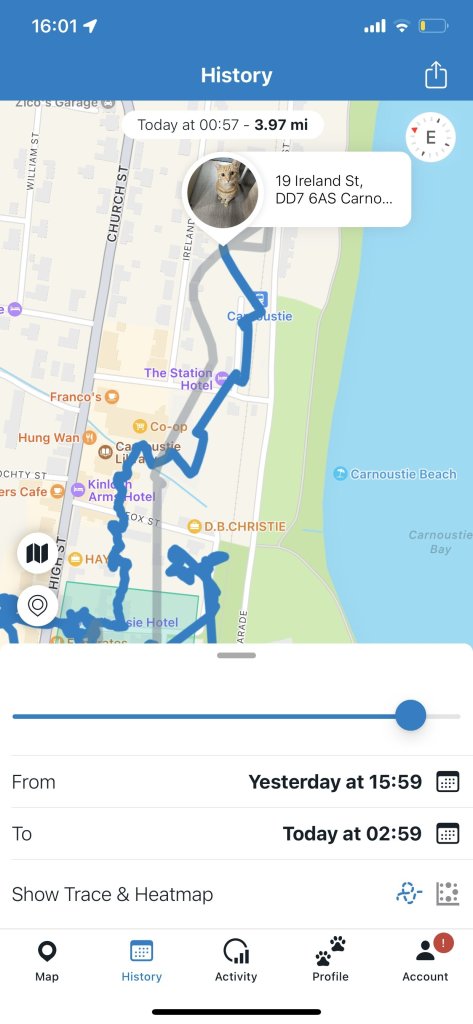
With yours set up, you can both map out your cat’s territory – and also figure out their favorite spots around town. (Where they like to hide, hunt, or just hang out.)
Which, in an emergency – like if they’ve gone missing – can help you figure out where to look first. Plus, figure out what areas should be off-limits for your cat.
Because when it comes to your cat’s safety, it’s always worth taking that extra step.
Wrapping up: Why is my cat not eating? And what can I do about it?
If you’ve got a cat not eating for a short time, it’s likely nothing to panic about. It could be a case of them:
- Getting fed elsewhere
- Having hunted their own food
- Feeling stressed out from some change in routine
- Being in heat

⚠️ But if your cat doesn’t eat for 12-24 hours, pay close attention to their behavior. It could signal that something’s wrong and that they need medical care right away. Including conditions like:
- Poisoning
- Inflammation of organs
- Dental problems
- Infections (including viral and parasitic infections – especially if your cat hasn’t been vaccinated)
- Gastrointestinal disease
- Hyperthyroidism
- Intestinal obstruction or constipation
- Urinary tract obstruction
- Liver disease
And one of the first steps you can take to catch on to a sickness early? Tracking your cat’s activity – and also where they might be off wandering. (And coming in contact with something potentially infectious.)
💡Plus, if you’ve invested in a Tractive device, you now have all this in one device – built with love for cats and loved by cat parents around the world (just like you.)
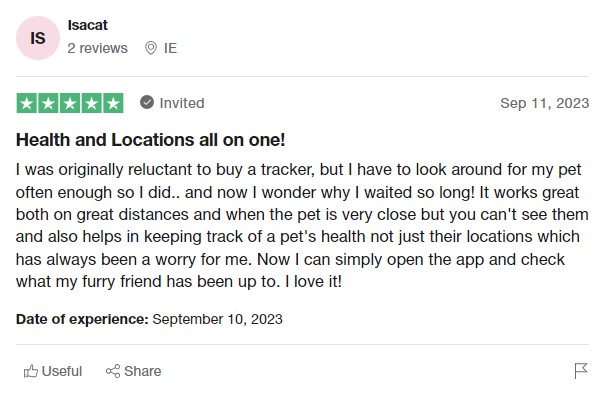
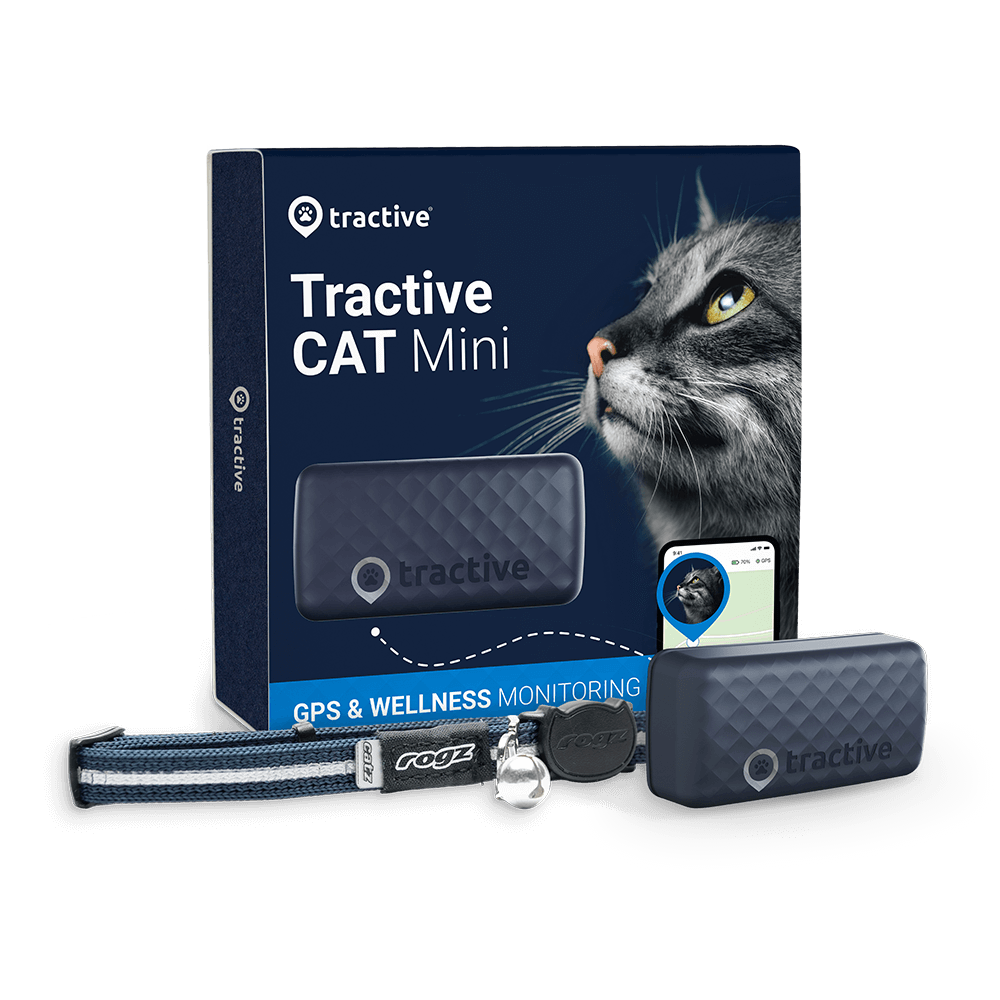
Know everywhere your cat goes
See where they are in real-time, no matter how far they go. Get alerts if they roam too far home. Find out where they’ve been and discover their favorite spots. Let others track with you.
Still curious why your cat isn’t eating as much? This video from AnimalWised explains it further:
And if you’ve liked this post, share it with a friend or a loved one – and let’s help build a safer, kinder world for our furry friends together.
Your furry friend’s health and wellbeing means as much as to us as it does to you. So we’ve made it a priority to only share medically-relevant content on our blog.
This post was checked, double-checked, and medically verified by Georgia-based vet, Dr. Dwight Alleyne.
Dr. Dwight Alleyne, DVM
Dwight Alleyne was born and raised in Long Island, New York where his love of animals began. His career for animals began working for a well-known no-kill animal shelter on Long Island.
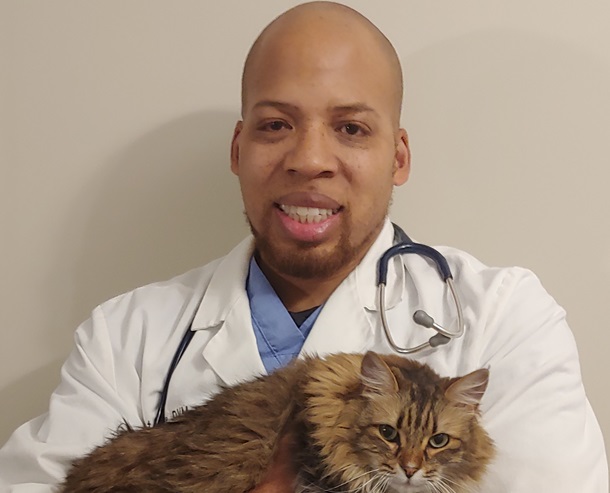
He worked his way up the career ladder working as a kennel technician, veterinary assistant, and then becoming a licensed veterinary technician at the shelter.
His passion for veterinary medicine led to him applying to and being accepted at Cornell University Veterinary where he graduated from in 2006. After completing a small animal rotating internship at Purdue University, he eventually made his way to Georgia where he has been practicing ever since.
Dr. Alleyne has practiced at several small animal clinics throughout Georgia. He has a keen interest in soft tissue surgery and has extensive experience in performing ultrasounds including echocardiograms.
When he is not practicing medicine, Dr. Alleyne enjoys writing and editing pet health articles and providing pet advice through telehealth.
Dr. Alleyne also has his own blog called “The Animal Doctor Blog.” Check it out on: www.anmldrblog.com.


